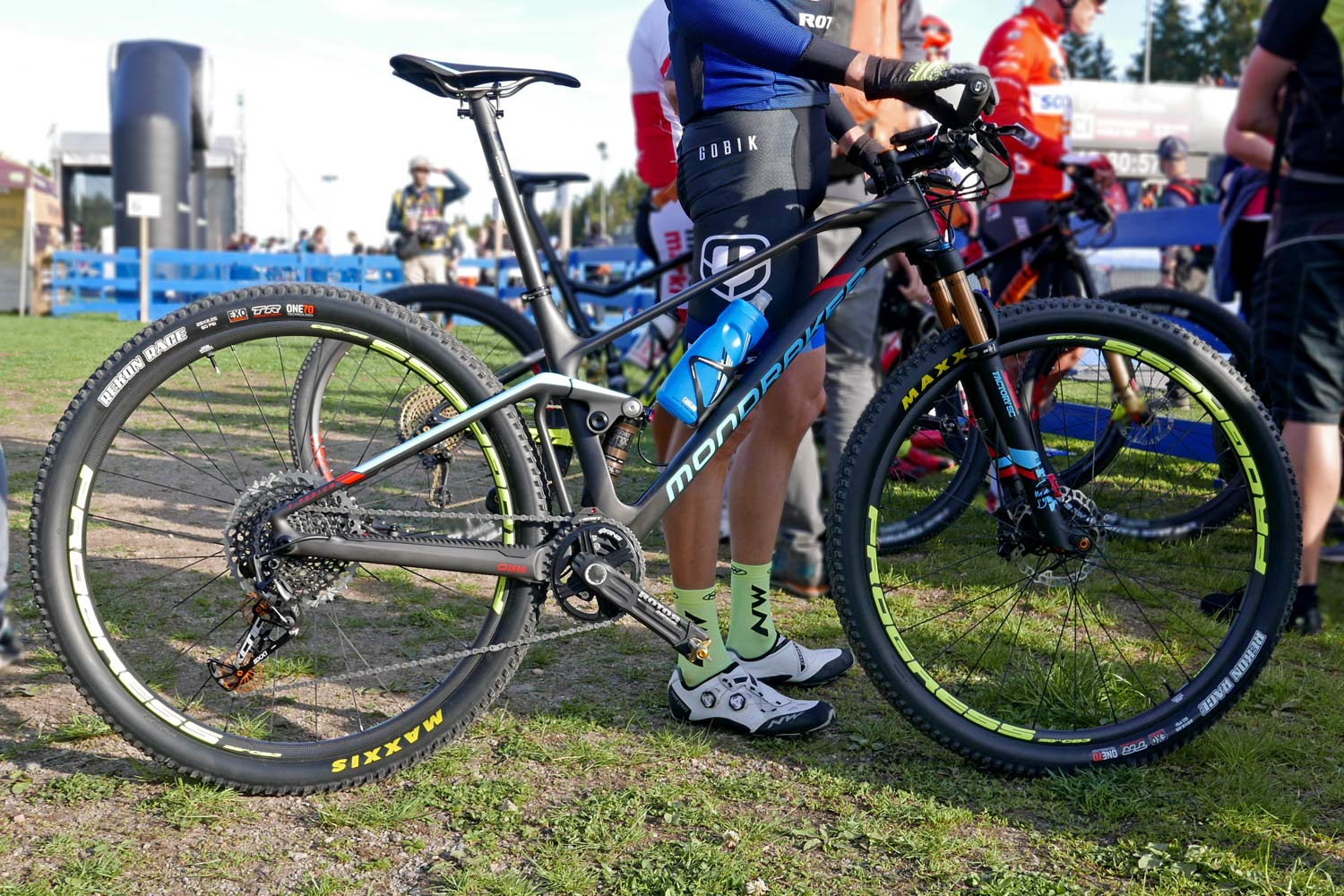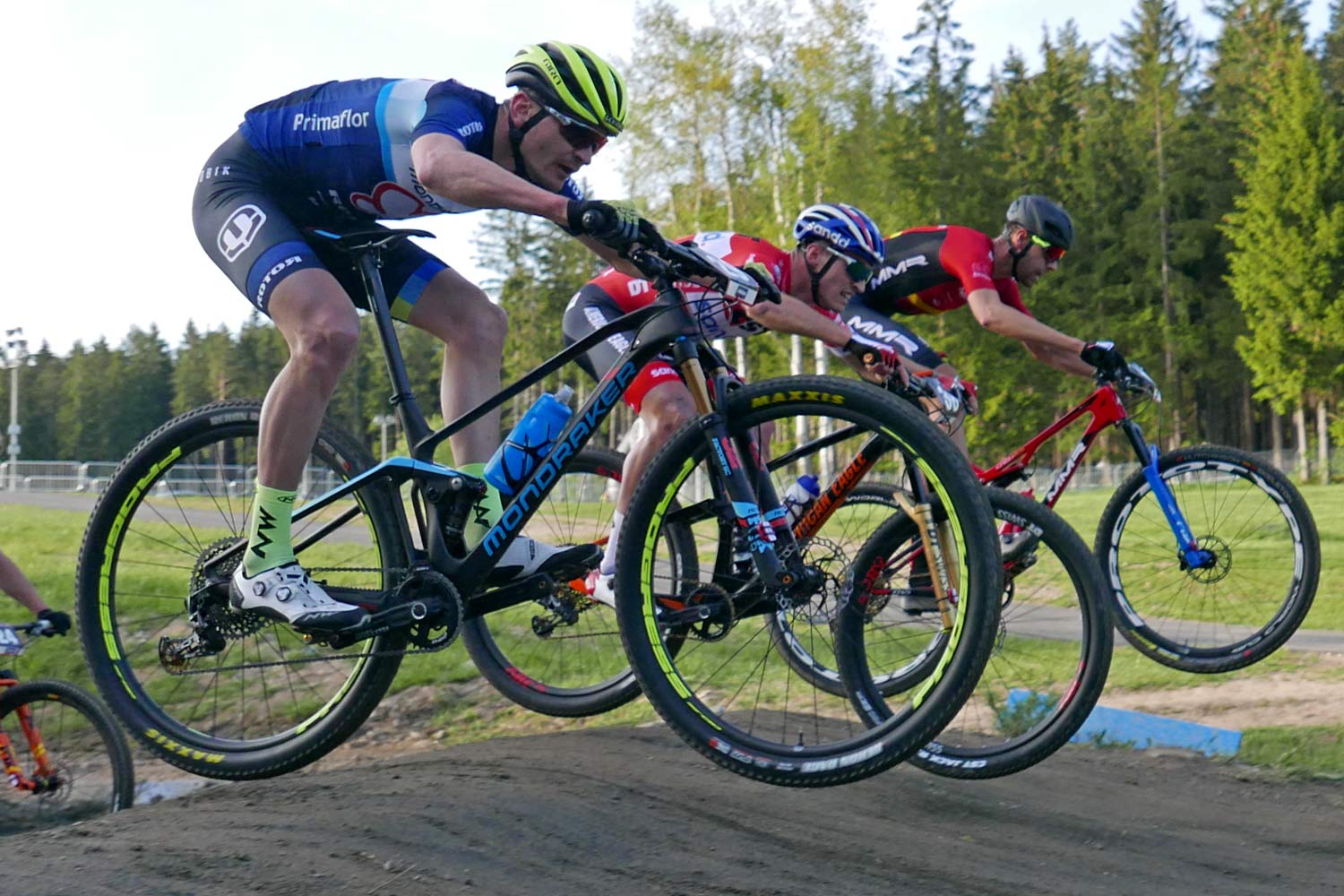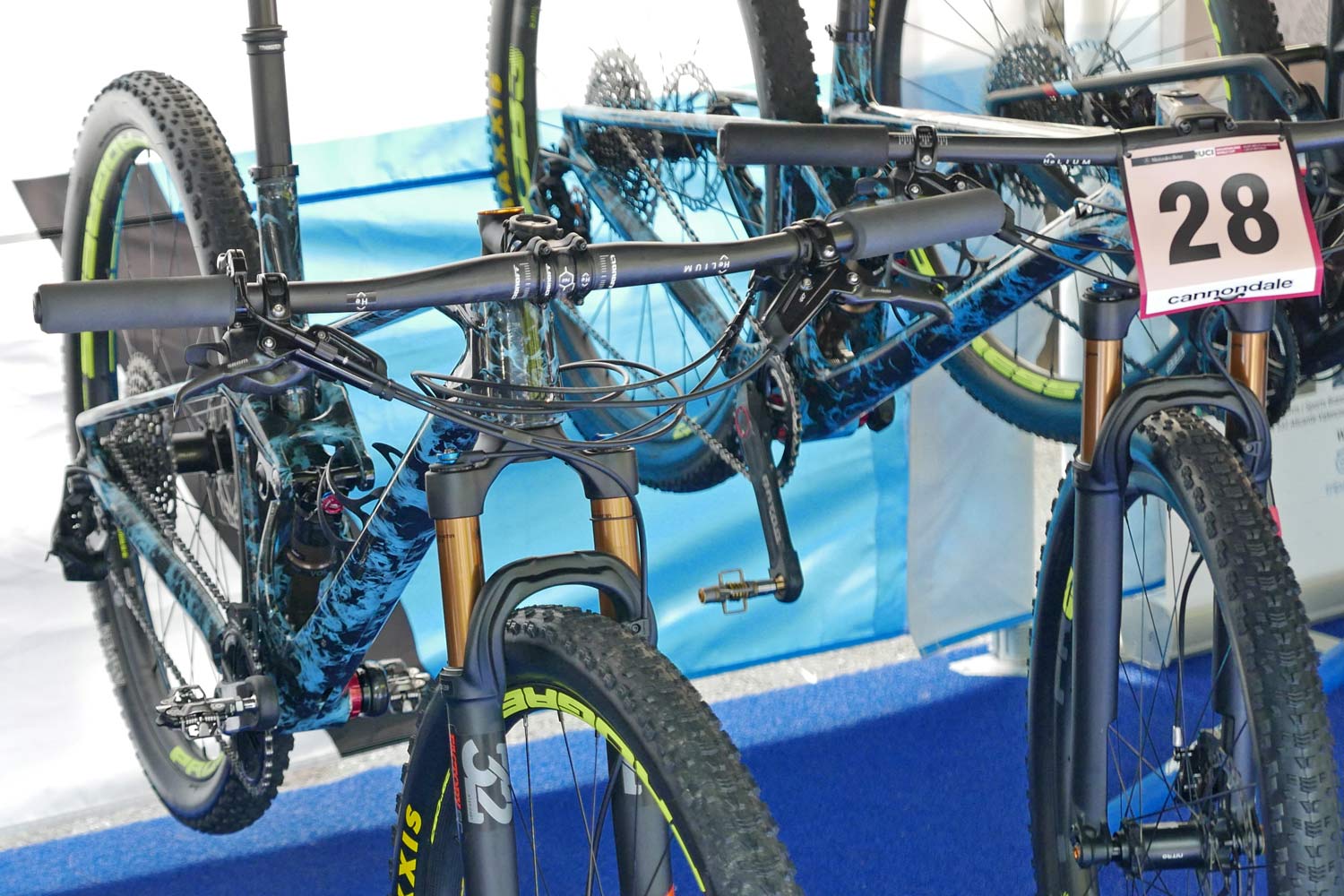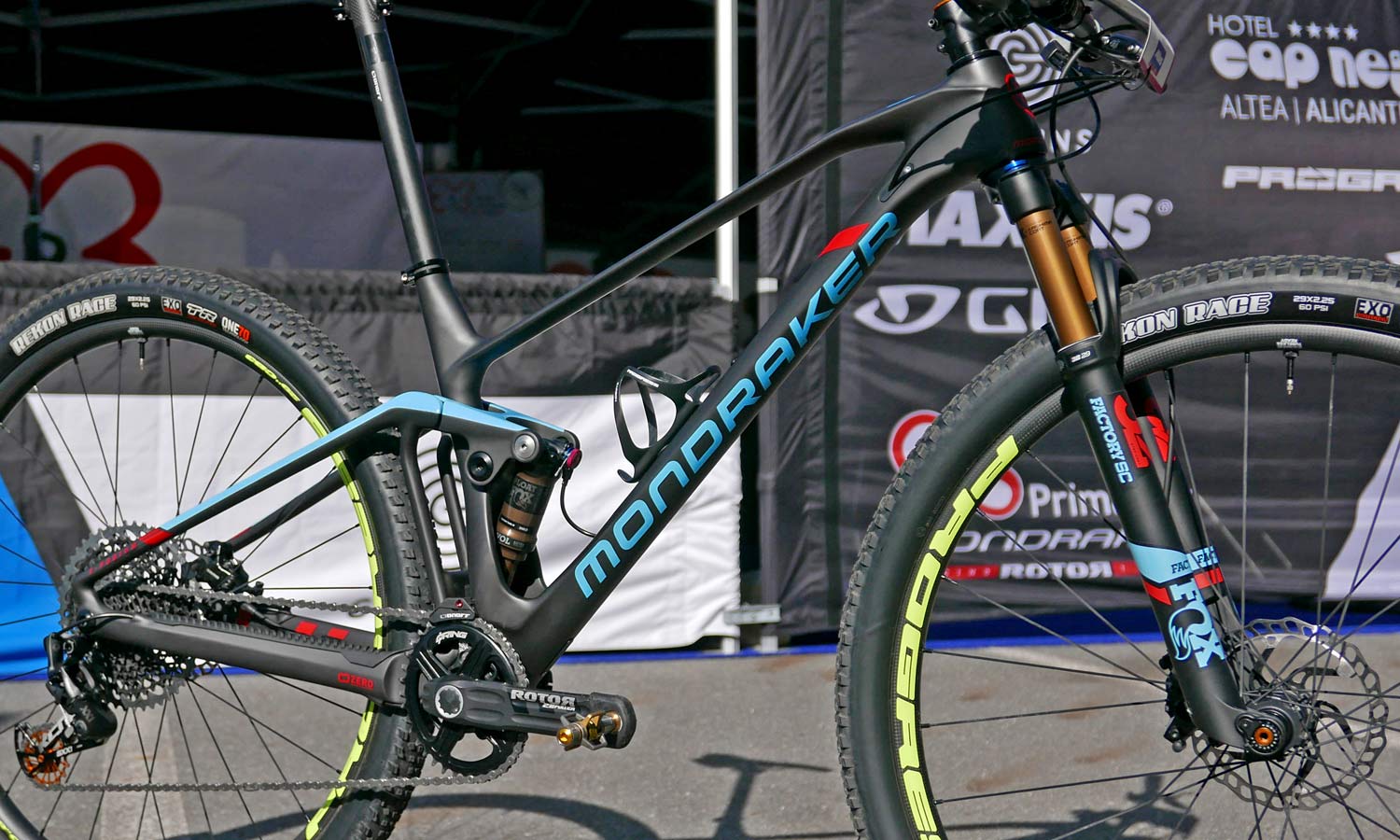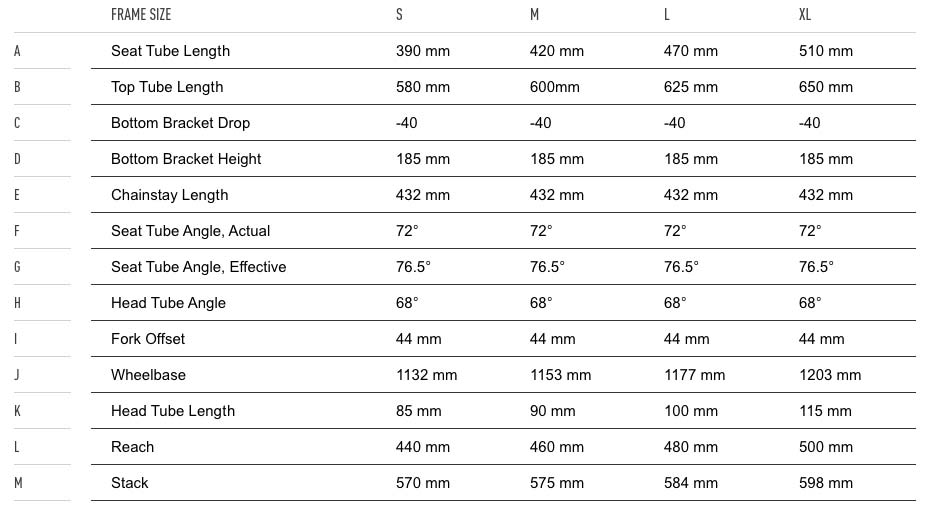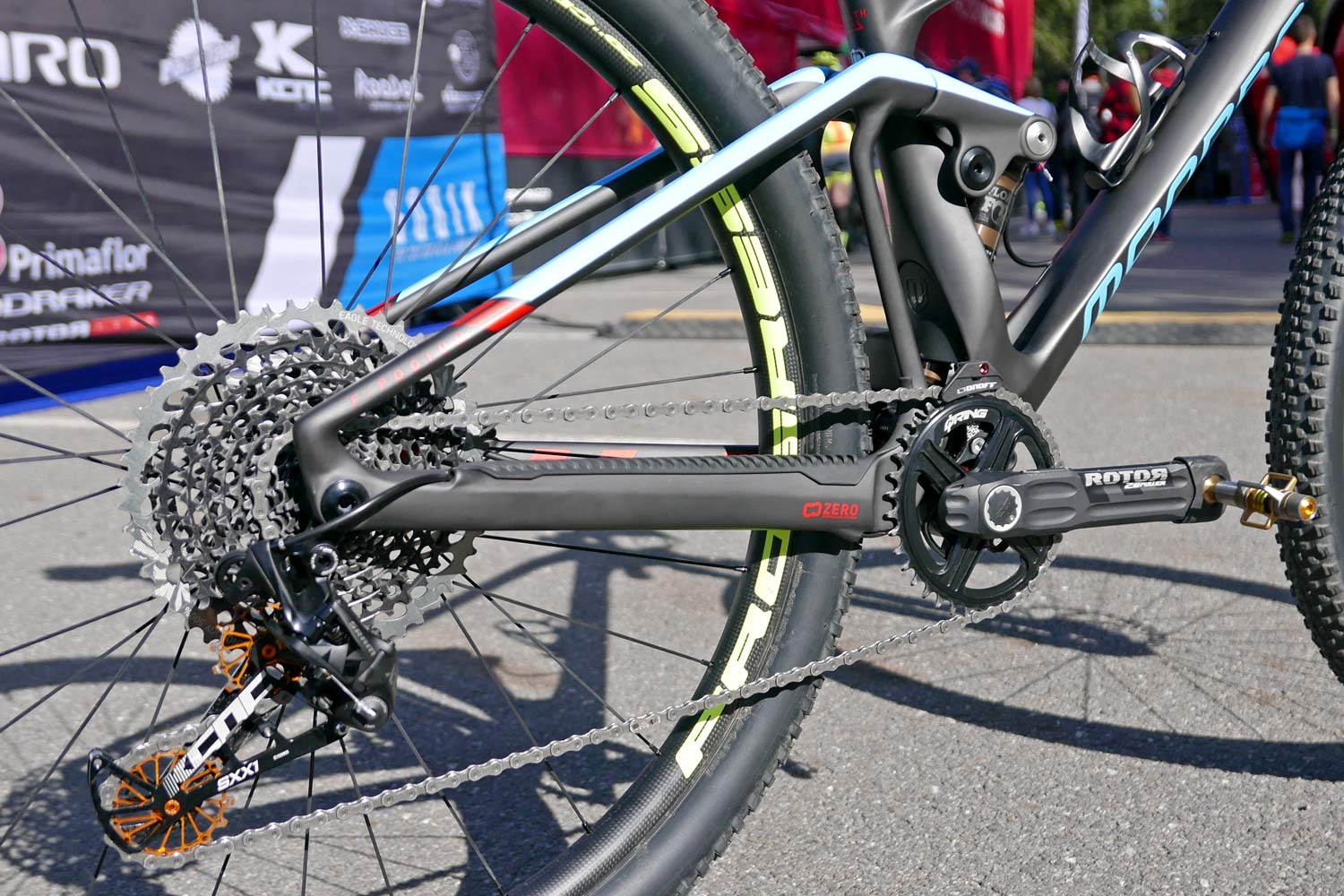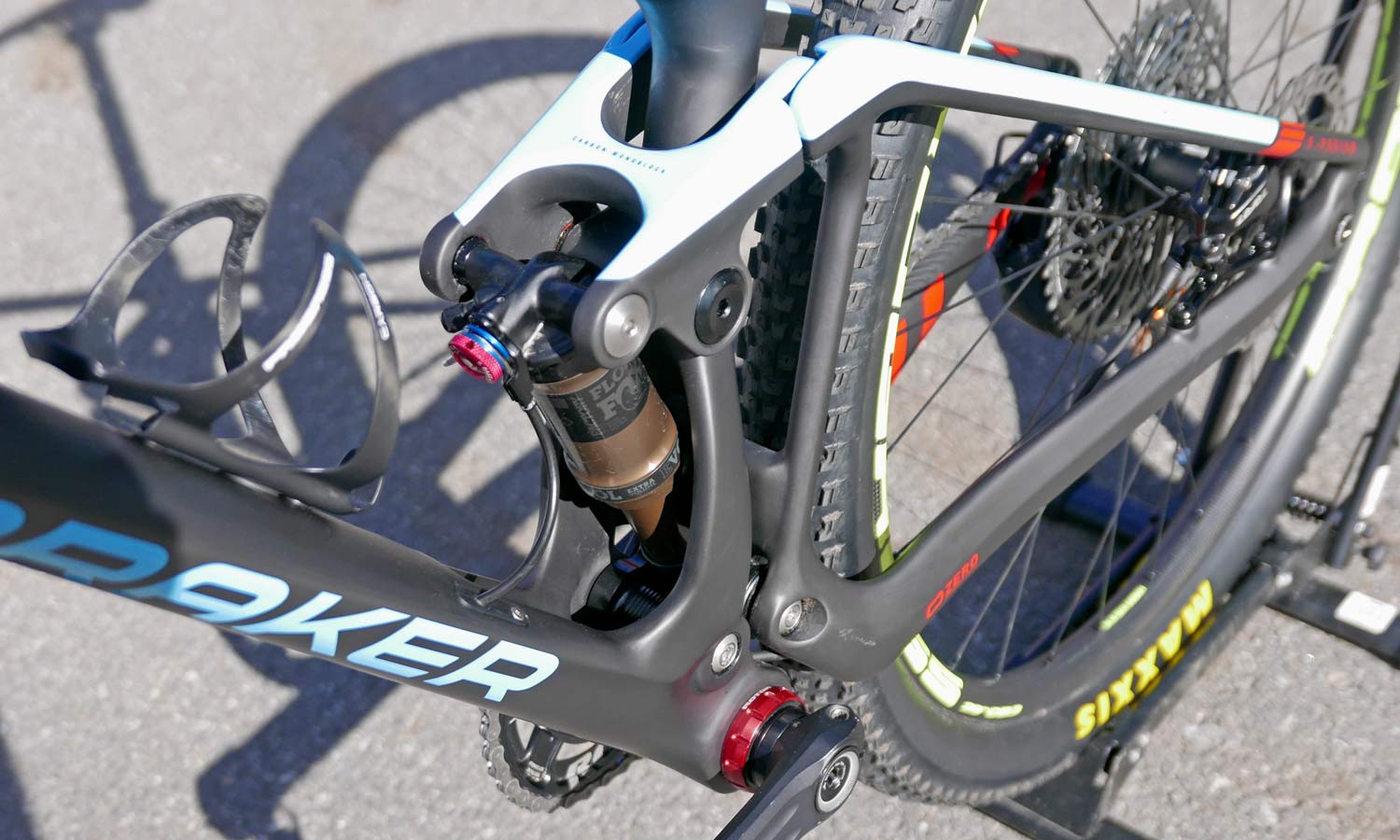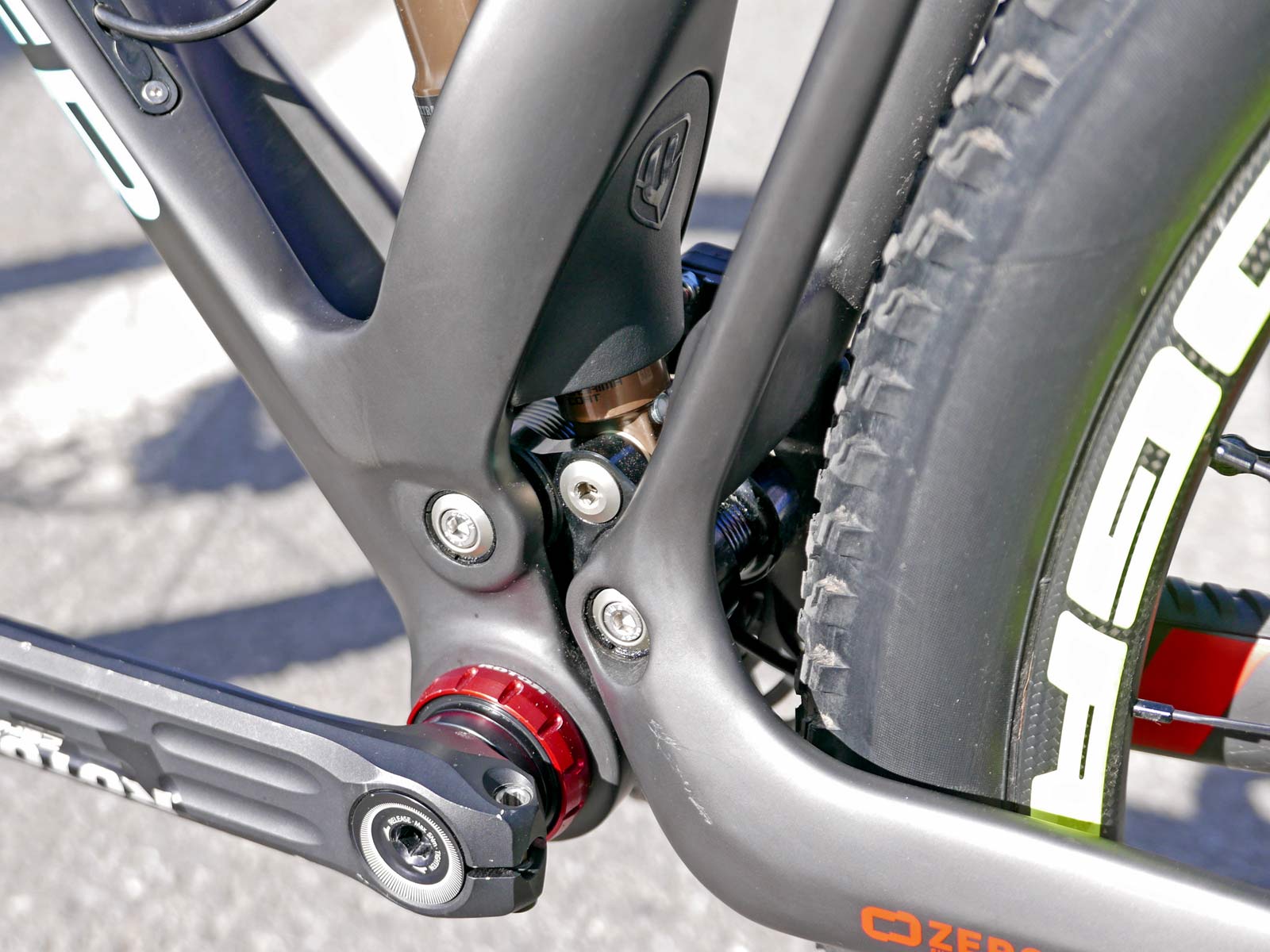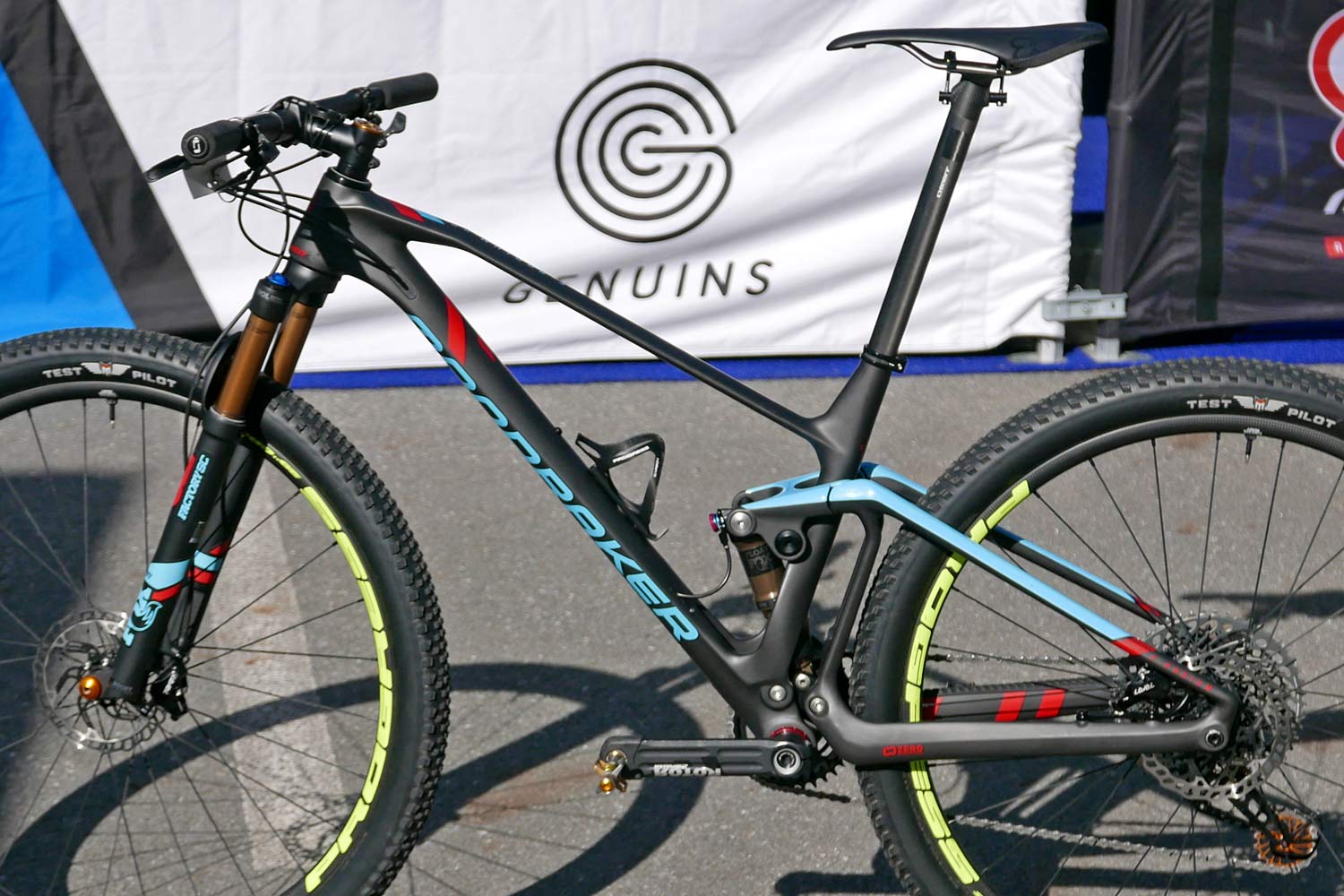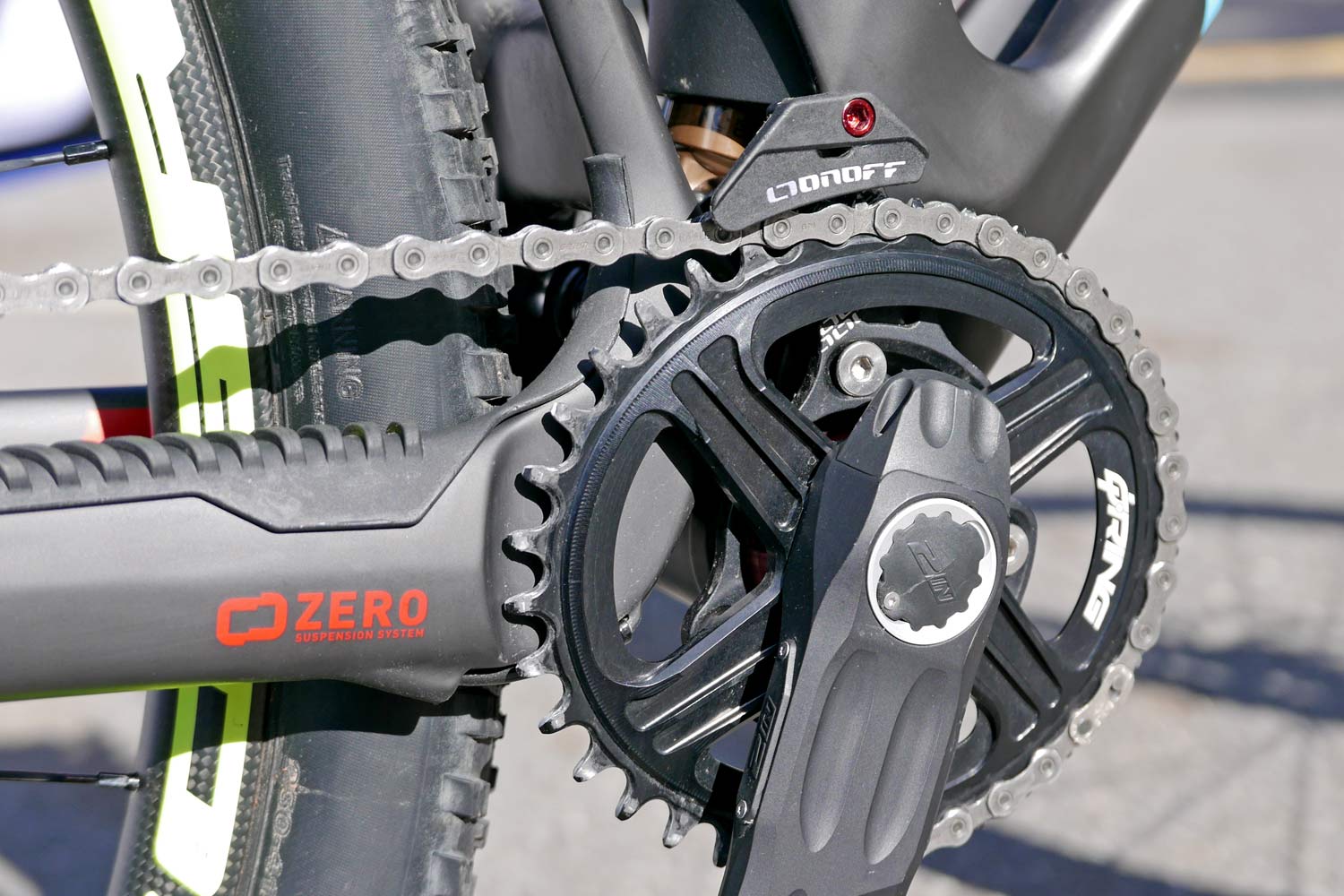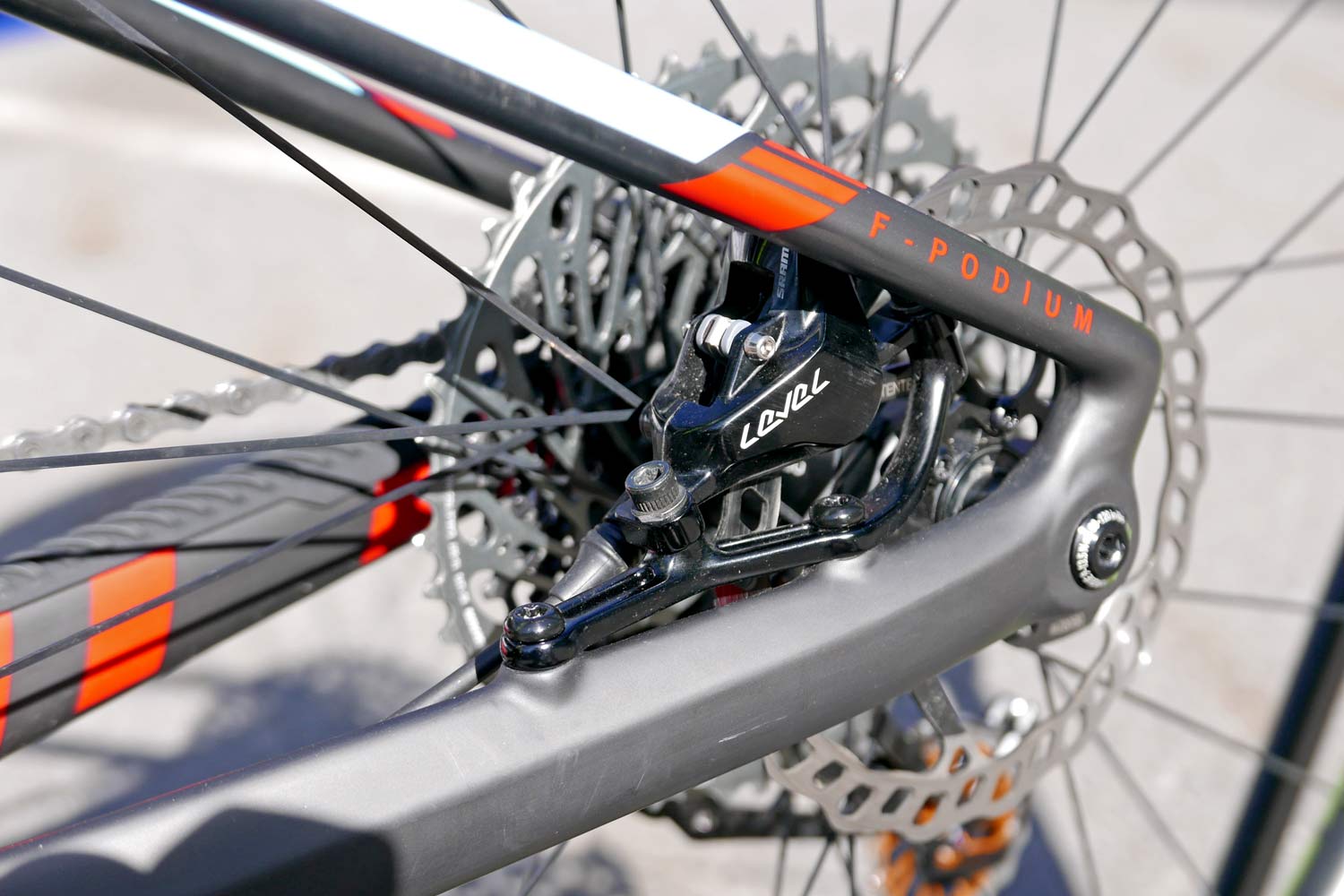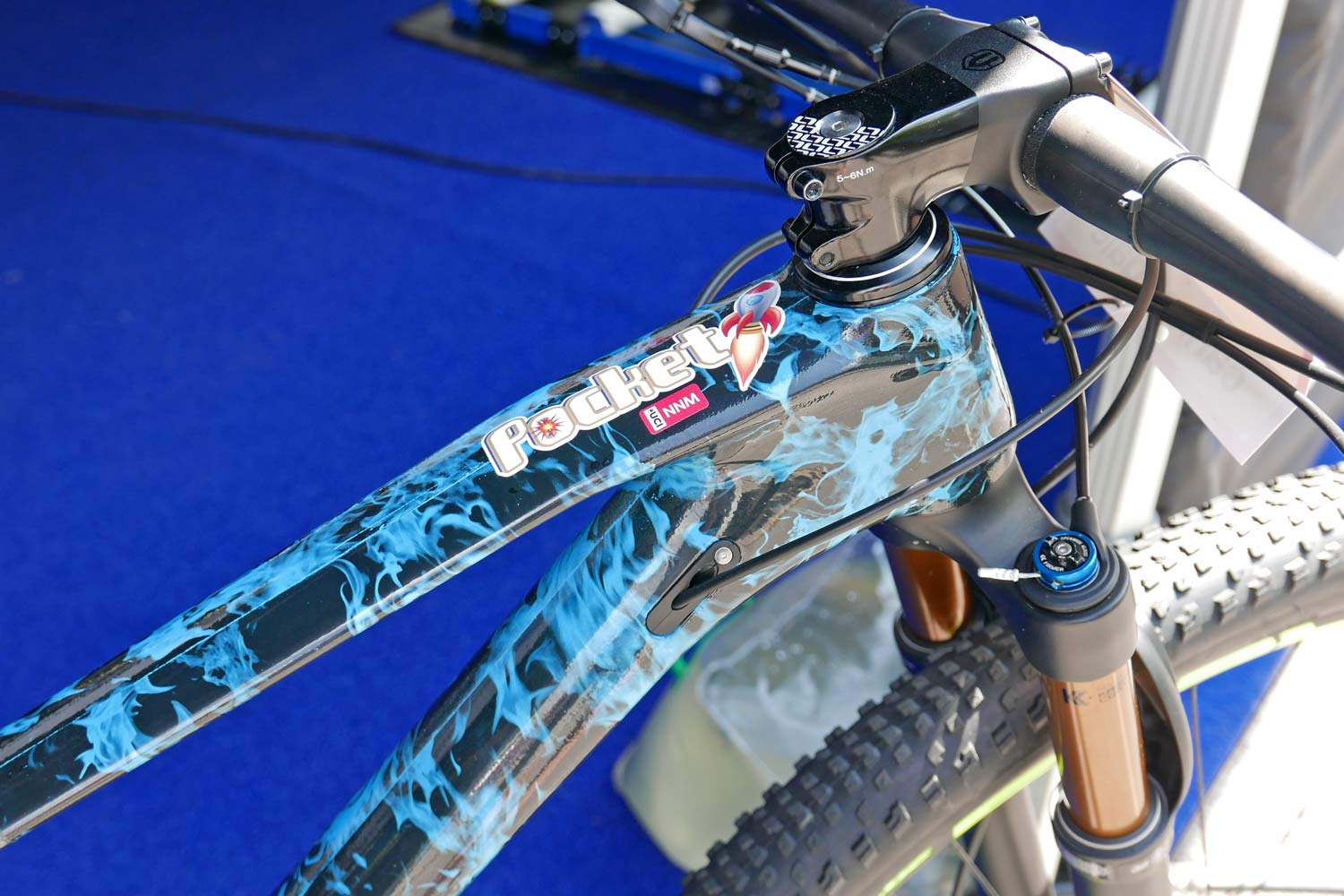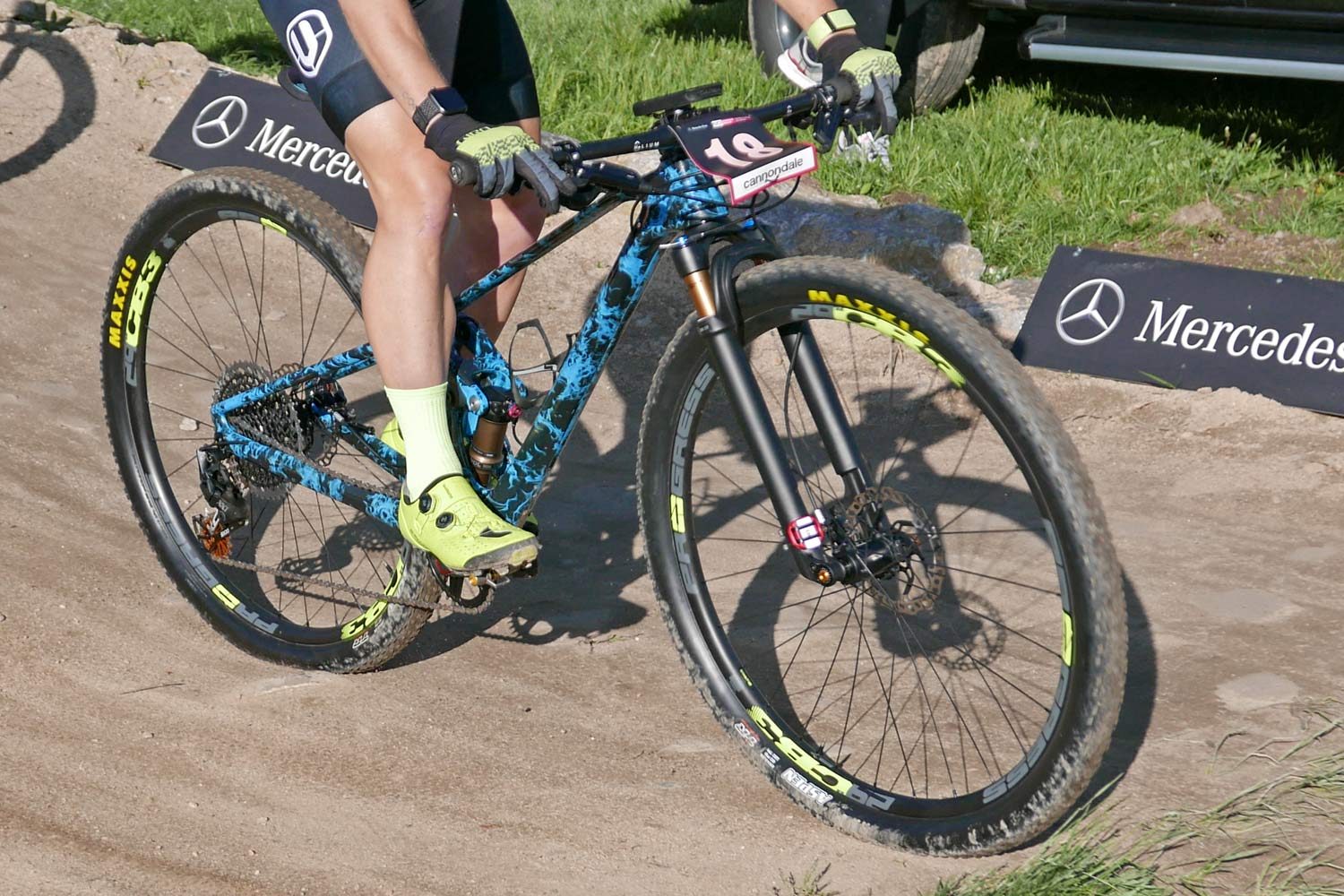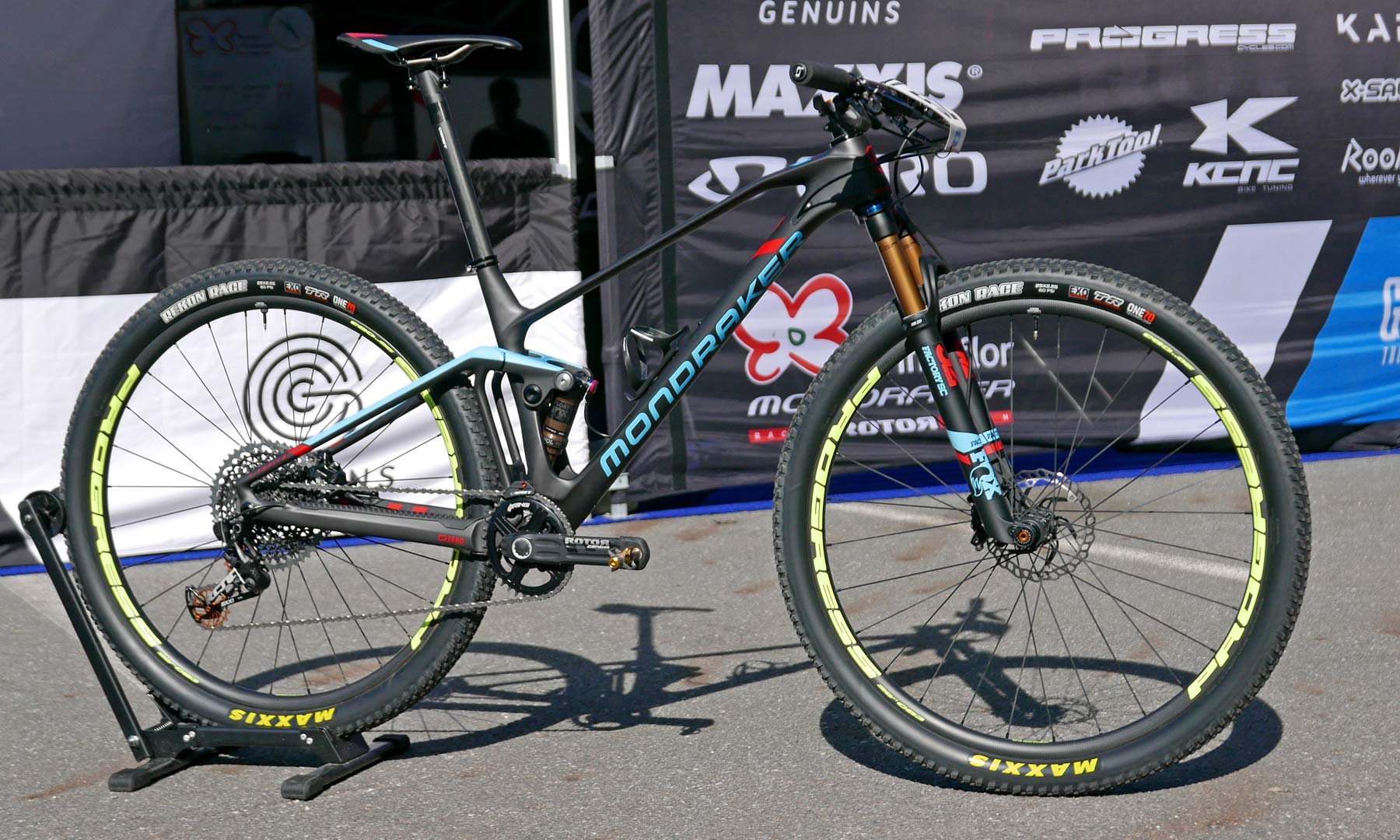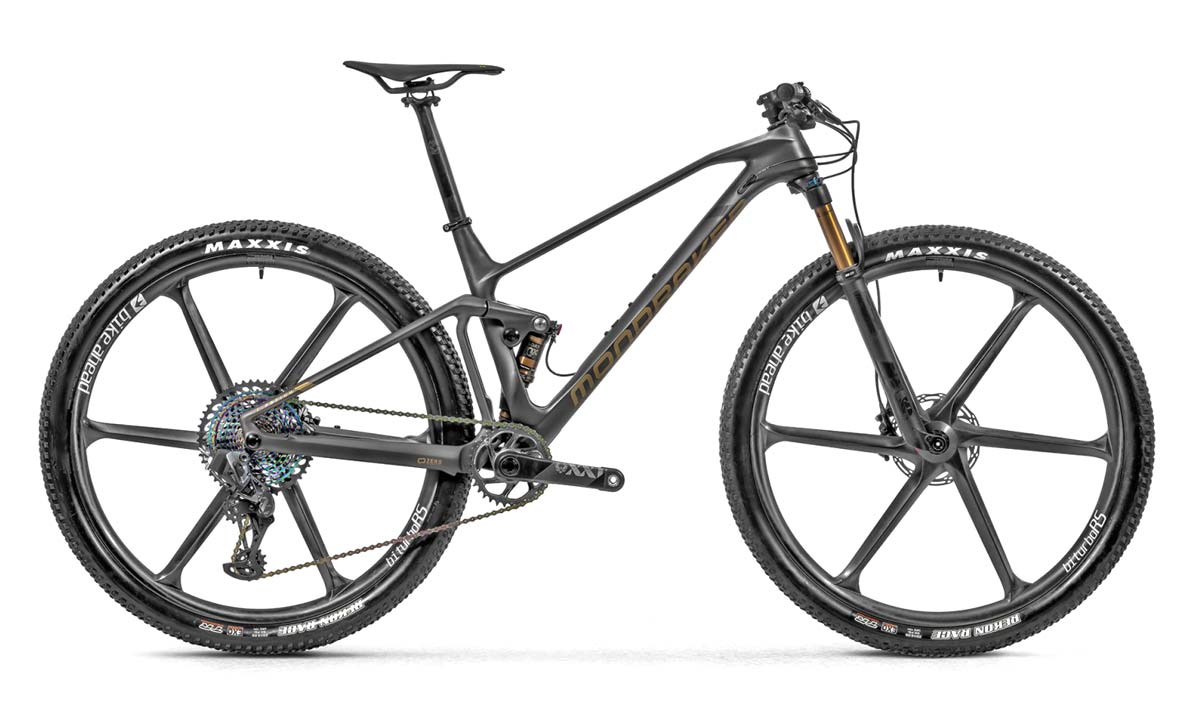After two full years of World Cup race testing since we first spotted it, the Mondraker F-Podium RR is finally racing without camouflage, and we dive into the full details. Built to remap their aggressive Forward Geometry for the XCO circuit and sporting 100mm of short-link suspension, Mondraker’s new F-Podium is one of the slackest bikes racing elite cross-country.
Mondraker F-Podium RR 100mm carbon XC mountain bike
The F-Podium has been one of the worst kept secrets in XC racing, since we broke the news of its race debut here at Nové Město back in 2017, camouflaged with an Escher sticker wrap. But since then, Mondraker has been open with their development of the new bike – putting a number of frame prototypes through the ringer.
While they have had a Podium hardtail XC bike in the line for some time, Mondraker had so far not produced a short-travel full-suspension cross-country bike. So they spent the last few years reworking their signature suspension design & modern trail bike geometry into a capable XC race weapon.
The result is said to be a fast Forward Geometry race bike, with plush & efficient dual-link Zero Suspension – a lighter, faster World Cup XC-ready 29er race bike.
F-Podium – tech details
Mondraker used the new F-Podium as a project to further refine how they build carbon bikes, developing a new hi-mod carbon layup they call Stealth Air Carbon with German carbon maker 3C from Formula 1, in hopes of producing the bike in Europe. But in the end, realism of production demands sent the new bike to the same Taiwan factory that makes the rest of their carbon mountain bikes.
Known for the modern trail & enduro bike geometry they developed for the likes of the Dune & Foxy, that was the key starting point for the F-Podium. Mondraker didn’t want to just take the same geo from their XC hardtail, instead giving the new bike a slack 68° head angle, long toptubes with short stems (just 50mm for S & M, 60mm for L & XL), and a super steep seat angle. How steep? With the forward offset of the seattube, the effective seattube angle comes to 76.5°, keeping weight balance forward for efficient pedaling without wallowing into rear wheel travel.
That geometry still went through several iterations together with elite XC team Primaflor-Mondraker, before being finalized in late 2018 with the final even steeper seat angle, slackened headtube, and even longer reach. A big part of that apparently is the short 44mm fork offset of the F-Podium, designed to increase Trail for greater cornering stability.
Besides modern geometry, Mondraker was uncompromising in maintaining a lightweight iteration of their short-link Zero Suspension. While most light XC bikes use a version of a single pivot design, Mondraker kept their pure 4-bar design for its more efficient pedaling & braking platform, and improved traction since the suspension can be left unlocked in most race situations.
The result is a supposedly plush 100mm of short-link four-bar travel though the floating, trunnion mount metric shock, all rotating on oversized axles and pivot bearings. Plus, with the one-piece rear end, the F-Podium maintains clearance for up to 29×2.4″ tires.
At the heart of the Zero suspension design is the small machined aluminum lower link tucked above the bottom bracket that ensures a more vertical rear axle path, and allows Mondraker to precisely tune the bike’s kinematics. Mondraker calls it Zero because of claims of zero power loss, zero pedal kickback, zero brake jack & zero bumps due to it soaking up small & big impacts.
Tucked inside that tight little space is also an integrated fender to protect most of the rear shock’s slider. There’s also notably a standard 73mm threaded bottom bracket shell, as well.
Up top, a stiff one-piece carbon rocker link guides the rear end and drives the trunnion shock.
The new F-Podium joins the bulk of new trail & race bikes going 1x only. Designed specifically for 1×12 drivetrains, the bike is able to keep relatively short 432mm chainstays while getting Boost spacing and room for big tires.
Keeping with the 1x setups, the F-Podium gets an integrated rubber chainstay guard to protect against & quiet chainslap. Some – like the Primaflor-Mondraker team – might also run a BB mounted chain guide to pair with their clutched rear derailleur.
The Boost 148 frame features a chainstay-mounted brake, using a curious looking adapter to tuck a standard post mount caliper tightly into the stays for even this 160mm rotor.
The bike includes modular, locking internal cable routing ports behind the short tapered headtube to run whatever wired or wireless 1x drivetrain you want, plus internal dropper routing of course. There are ports to route Fox Live Valve setups, or simply a remote rear shock lockout as is included on every complete bike.
In developing the F-Podium, Mondraker had tested an extended toptube/integrated stem design like on the Podium hardtail, even having shown that version most recently on the RR SL we saw last summer. But in the end they chose to stick with a more standard 1.125-1.5″ tapered headtube setup, with an integrated headset and the flexibility of conventional stems, dropping about 80g off the frame in the process.
Pricing & availability
The new F-Podium is offered in three standard complete bike builds: the 4000€ F-Podium, 6000€ F-Podium R, and the 8000€ F-Podium RR like the team is racing including a Rotor power meter (and a claimed complete 10.21kg/22.5lb weight). A separate 3200€ RR frameset will also be available with a Fox Factory remote lockout shock (1987g claimed M frameset). All of these bikes share the same Taiwanese-made carbon frame and tech details.
If money is no object the limited edition F-Podium RR SL that we previewed last summer will sell for 13,500€ in just 100 pieces worldwide with an even lighter, hand-laid frameset and a killer, no-hold-barred build, available from November 2019.
The new bike is a 2020 model officially, but the standard frames are said to be available in limited numbers starting next month, June 2019. So if you really need to get your XC race on, better pop into your local Mondraker dealer quickly.
